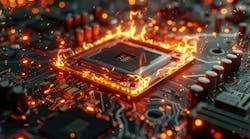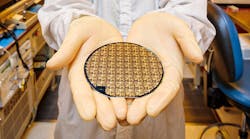Gallium-nitride (GaN) technology’s impact on the RF/microwave industry cannot be overstated, as it’s enabling applications from space and military radar to cellular communications. And while GaN is generally associated with power amplifiers (PAs), it has other use cases as well. GaN’s journey since its introduction has been fascinating, and it’s likely to be even more so as we enter the era of 5G.
GaN’s Role in the Radar and Space Realms
Two variants of GaN technology are GaN-on-silicon (GaN-on-Si) and GaN-on-silicon-carbide (GaN-on-SiC). GaN-on-SiC contributes heavily to space and military radar applications, according to Damian McCann, director of engineering, RF/microwave discrete products group at Microsemi. “Today, RF engineers are finding new applications and solutions to take advantage of the ever-enhanced power and efficiency performance levels achieved by GaN-on-SiC devices, notably in space and military radar applications.
“With GaN being a wide-bandgap semiconductor material that provides high levels of hardness, mechanical stability, heat capacity, very low sensitivity to ionizing radiation, and thermal conductivity, clever designs result in even greater size, weight, and power (SWaP) advantages. We have also seen GaN-on-SiC technology outstrip once competitive technologies—even at lower frequencies.”
System designers stand to benefit from GaN-on-SiC technology. McCann explains, “Thermally enabled and highly integrated laminate technology, when coupled with GaN-on-SiC, is allowing the system designer to now look to even greater levels of integration, notably extending primary radars to cover multiple bands in the same physical area and adding increased secondary radar functionality. Applications within the space market have also recently seen an increase in GaN-on-SiC feasibility work, notably in applications in which the efficiency of GaN is complemented by the ability to operate at ever-higher frequencies.”
He adds, “The power density of millimeter-wave (mmWave) GaN brings a new set of design techniques looking for even greater levels of back-off. Solutions must extend beyond power and linearity in power back-off, but also to when power control is needed or when operating into variable levels of VSWR.”
McCann also notes that GaN-on-SiC technology makes it possible to replace older klystron technology. He says, “The general application of active electronically scanned arrays (AESAs) and phased-array elements in military and commercial space applications is also looking to take further advantage of GaN-on-SiC monolithic-microwave-integrated-circuit (MMIC) integration to reach new levels of power—even replacing aging klystron technology in some cases.








